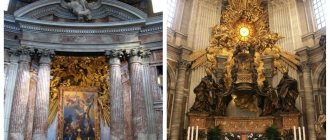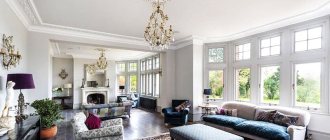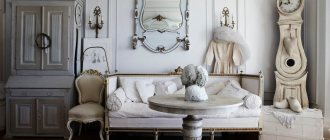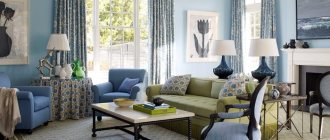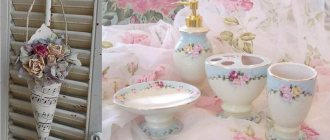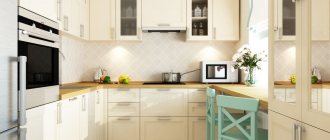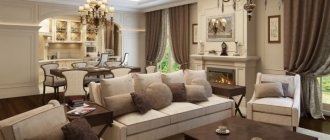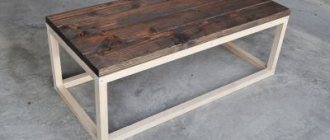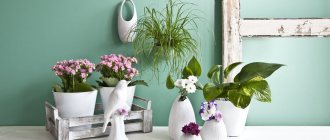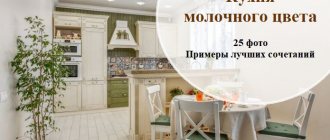Baroque as a style in the interior appeared in the 17th century in Italy, but its elements still find their admirers. If you are one of them, make yourself comfortable, we have something to share.
Two works by Giovanni Lorenzo Bernini. On the left is the Church of Sant'Andrea al Quirinale, opened in 1670 in Rome. On the right is the Chair of St. Peter in St. Peter's Basilica in the Vatican, opened in 1666
The emergence of the Baroque style
We even have a separate article on this topic. At the beginning of the 17th century, religion in Rome played a huge role in the lives of ordinary citizens. In response to the Protestant Reformation, the Catholic Church sought to establish emotional contact with the Italians. And if during the Renaissance, architectural art positioned itself as elitist and “not for everyone,” then the Baroque was designed to make even the uneducated masses believe in the power and grandeur of the church.
The popes hired the best architects, artists, and interior designers to build countless churches and palaces, which changed the appearance of the city and made Rome visually richer and more luxurious. This style was quickly picked up throughout Europe. Following the exterior, the interior decoration of wealthy citizens also changed. The great artists of their time were developing a new style of furniture and decor, trying to outdo each other and themselves. Let's see what they came up with.
Historical excursion
Originating as an architectural movement in Italy in the mid-16th century, Baroque transformed into a separate stylistic movement in European and American art. In its “primordial” form, starting from the end of the 16th century, the style existed for another two centuries.
“Barocco” is translated from Italian as “wonderful, distorted, pretentious.” Historians believe that this movement is a continuation of the Renaissance and stands at the origins of the work of Michelangelo, who was secretly called the “ancestor of the Baroque.” It was he who came up with the idea of “wall plasticity” as a style-forming element.
Michelangelo (Michelangelo di Lodovico di Leonardo di Buonarroti Simoni) - Italian, painter and architect, sculptor and thinker of the Renaissance and early Baroque periods. Lived to be 89 years old. The only representative of that era about whom a chronicle was compiled during his lifetime.
Basic principles
In Baroque it is customary to exaggerate expressions and gestures, to create drama, tension, and grandeur. Baroque style is a symbol of strength. Large and detailed pieces of furniture, frames and walls decorated with gold, carved ceilings - the style of palaces and huge residences. In the modern world, it is very difficult to recreate the atmosphere of the correct Baroque due to the scale of the style. But a neat mix of modern lines and basic elements of traditional baroque can fit perfectly even into urban housing.
Try adding to your interior:
- Furniture decorated with exquisite carvings, plated with gold or bronze
- Rich decoration: moldings on the walls and ceiling, tapestries, stucco moldings
- Sculptures and graceful statues, often depicting children, musicians and beautiful women
- Luxurious bed linen (brocade, silk, velvet)
See how you can add individual style elements to modern design. The details remain the same - stucco molding, high windows and doors, but several weightless objects completely change the space.
Hallway design
The interior of the hallway should match the decoration of the house. This room is the first thing a visitor sees when opening the door, and the whole impression depends on it.
The furniture set for arranging a hallway is standard: a wardrobe, a mirror, a small stand for canes and umbrellas, a table. All this comes together into a single package. All products must be massive, carved, decorated with gilding or bronze inserts.
Wood or ceramic tiles are laid on the floor. An interesting solution is to lay out a “checkerboard” tiled pattern.
We advise you to study - The best high-pressure washers according to user reviews
If the hallway is combined with other rooms, for example, a living room, the zones are demarcated. For this, both contrasting colors and massive colonnades can be used: interior owners strive to emphasize that they do not need to save every centimeter of living space.
The lighting in the hallway is decorated using bronze lamps, stylized as candles. If space allows, you can place several soft chairs or a small sofa in the hallway.
Wall decoration
The main rule is that the walls must be embossed. The Baroque style involves dynamics: a huge number of inserts, borders, moldings, tapestries, stucco moldings, niches, columns, and even pilasters. Renaissance paintings on the walls are welcome. Textile wallpaper, plaster, and painted wood panels are also used to add volume. Feel free to mix decor with each other: stucco, gilding, frescoes - in this style there is no such thing as “too luxurious”.
History of origin
It appeared towards the end of the 17th century, first in Rome, and later took root in Venice and Florence, after which it conquered all of Europe. The Baroque style in the interior came into fashion under Louis XIV, the peak of its popularity was the 18th century, and now there are also a considerable number of adherents of this trend.
The premises, decorated in the Baroque spirit, are reminiscent of royal palaces, replete with expensive ornate decoration, everything here is large-scale, intricate, even deliberately flashy. Initially, the unusualness and whimsicality of this trend were put at the service of noble persons and high-ranking ministers of the church in order to emphasize their wealth and power. Therefore, any element of furniture or decor pathetically declared the wealth of the owner.
The beginning of the Baroque era was the end of traditionalism and adherence to the classics. In the interior, as in all other areas, lush and extraordinary forms, dynamism, and contrasting color schemes are welcomed.
Baroque furniture
The main feature of Baroque furniture is its complex ornamentation. All furniture is decorated with many details, with abundant, very often exaggerated decoration. At the same time, the compositions are distinguished by a delicate balance and harmonious integration of all elements. The furniture parts are symmetrical, all details are repeated equally on both sides.
Furniture of that time was often made from exotic materials: mahogany and ebony, ivory, imported metals. Marble countertops were common, and gilding was especially popular.
Such furniture must be presentable and luxurious. Furniture is often decorated with:
- Fabric upholstery
- Varnishes and gilding
- Curved graceful legs
- Complex carving
Varieties
The literal translation of the word “Baroque” sounds like “whimsical”, which fully characterizes the furniture of this style. Let's take a closer look at the types of items that furnish rooms:
- Wardrobe - the main feature of wardrobes in Italian Baroque furniture is the curvature of lines and facades. There is no place for straight classical forms - all cabinets have rounded corners. Surfaces can be convex or concave. Wardrobes only have hinged doors; if you want to purchase a Baroque wardrobe, it must be made to order;
- A sideboard or display cabinet is distinguished by thin glass, which is often framed with an elegant golden pattern. Instead of glass, manufacturers install stained glass windows. On the shelves of the sideboards they store expensive, elite dishes, which the owners want to show off to their guests. On the sides of the storefront facades, imitation wood stucco is made;
- Table – Baroque furniture always contains beautiful ornate tables. They can be divided into 2 groups: coffee tables and dining options. The latter have a massive tabletop made of expensive wood. At such a table they have dinner and lunch, and gather guests. The coffee table has a low height, marble or wooden top. Its legs are decorated with curved carved elements covered with gilding;
- Sofas and armchairs - special attention to style is paid to upholstered furniture. Main color scheme: gold and everything that is close to it in color. Here you can easily find tapestries in sand, beige, and cream shades. Jacquard upholstery materials must have a sheen. White color is often used in the design, but it is also complemented with mother-of-pearl inserts. The legs of chairs and sofas are equipped with figured cutting, and the backs have a curved shape;
- Chairs – lions can often be found in chair upholstery designs – after all, they are considered the kings of animals. Chairs are placed near the dining table or dressing table;
- Pouf – soft poufs are placed in bedrooms or living rooms. They are intended for sitting before bed or while doing facials. Poufs are upholstered with materials that match the color of other upholstered furniture;
- Bed – a distinctive characteristic of this style of bed is its massive headboard. The edges are decorated with carved ornaments, often depicting designs with smooth lines. The beds are not made high, and elegant bedside tables are installed on the sides of the sleeping area;
- Dressing table – special attention is paid to the design of mirrors. They are enclosed in expensive baguettes to add pretentiousness. The table comes with a chair or pouf.
The selection of Baroque furniture should be done according to the surrounding environment. Contrasts are rarely used here, so it is important to choose plain products.
Dressing table
Chairs
Armchair and sofa
Table
Sideboard
Closet
Bed
Textile
Textiles are essential to maintain a sense of wealth and luxury. This effect is achieved with the help of lush draperies, pendants and tassels, and gold inserts. Curtains are of great importance. As a rule, curtains are made of velvet fabric, gold brocade, satin or silk, they are embroidered with gold thread or lurex. In modern interiors, fabrics that imitate natural materials are popular: such as onyx, marble, malachite, etc. The presence of a luxurious lambrequin, additionally decorated with embroidery, is very important. The use of contrasting colors is allowed.
Lighting
Baroque rooms require large windows that provide plenty of daylight. Wide mirrors are also used to fill the space with light and visually enlarge it. Artificial lighting is represented by massive crystal chandeliers with lamps imitating candles. Wall lamps and spectacular floor lamps with carved legs are also used.
Baroque trifles
With all this, low ceiling chandeliers, with simulated candlesticks or crystal threads, fit harmoniously. Porcelain figurines fit very succinctly in cabinets, on fireplaces, and shelves.
In addition, you can purchase an antique set for several people made of porcelain and other modern materials. But it must be painted and have carved edges, handles, borders, etc.
Many small accessories that can also carry echoes of style: combs with elegant carved handles, brooches, hairpins, cigarette cases, boxes for Havana cigars, vases, busts, wall lanterns.
In the interior of an apartment, style techniques can be used in the bedroom, hallway, halls, and kitchen. Any corner will contain some accessory from the era of Louis, and you will plunge into the rich luxury of Italy, which, by creating the Baroque, tried to prove its greatness to the Protestant world.
